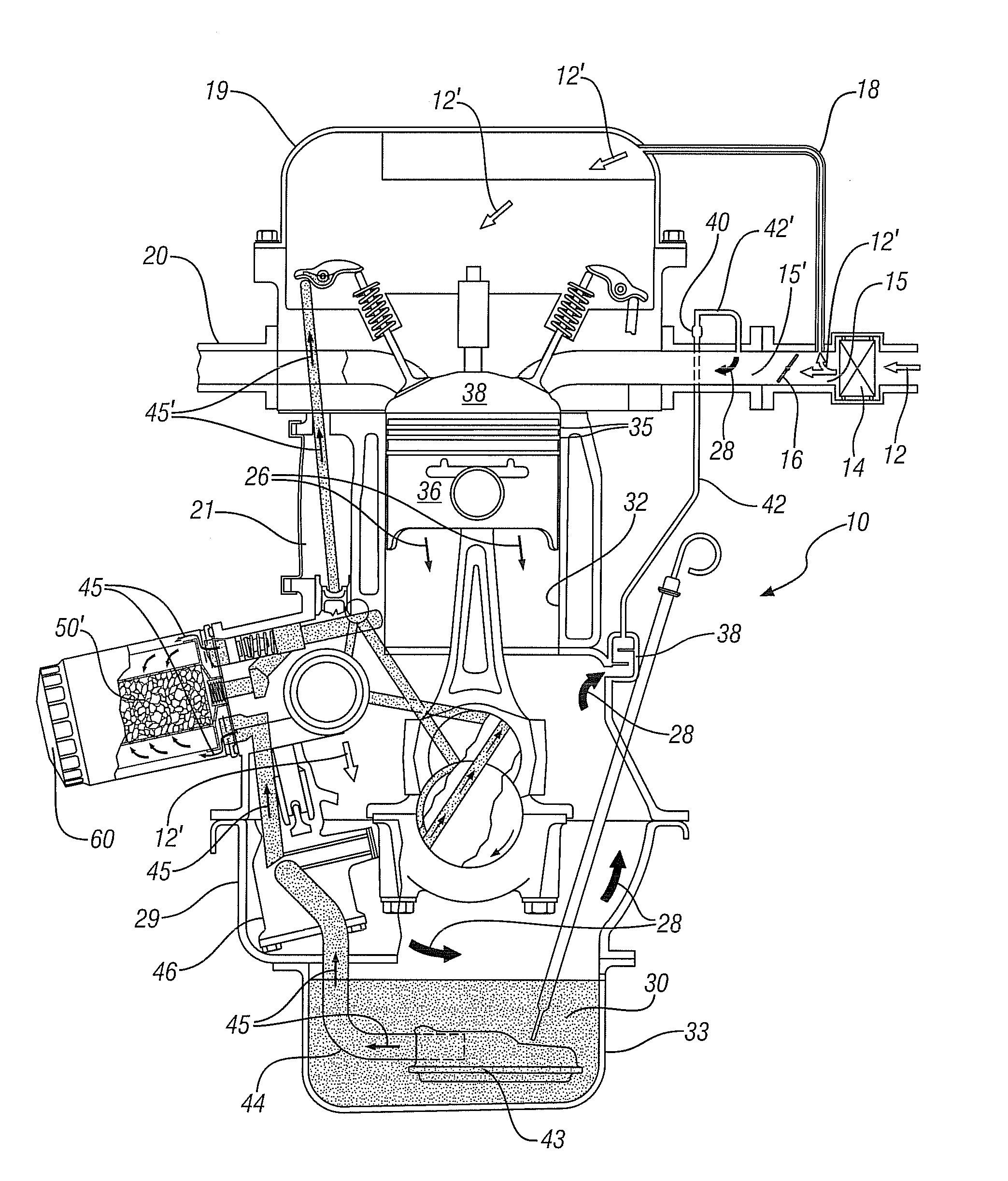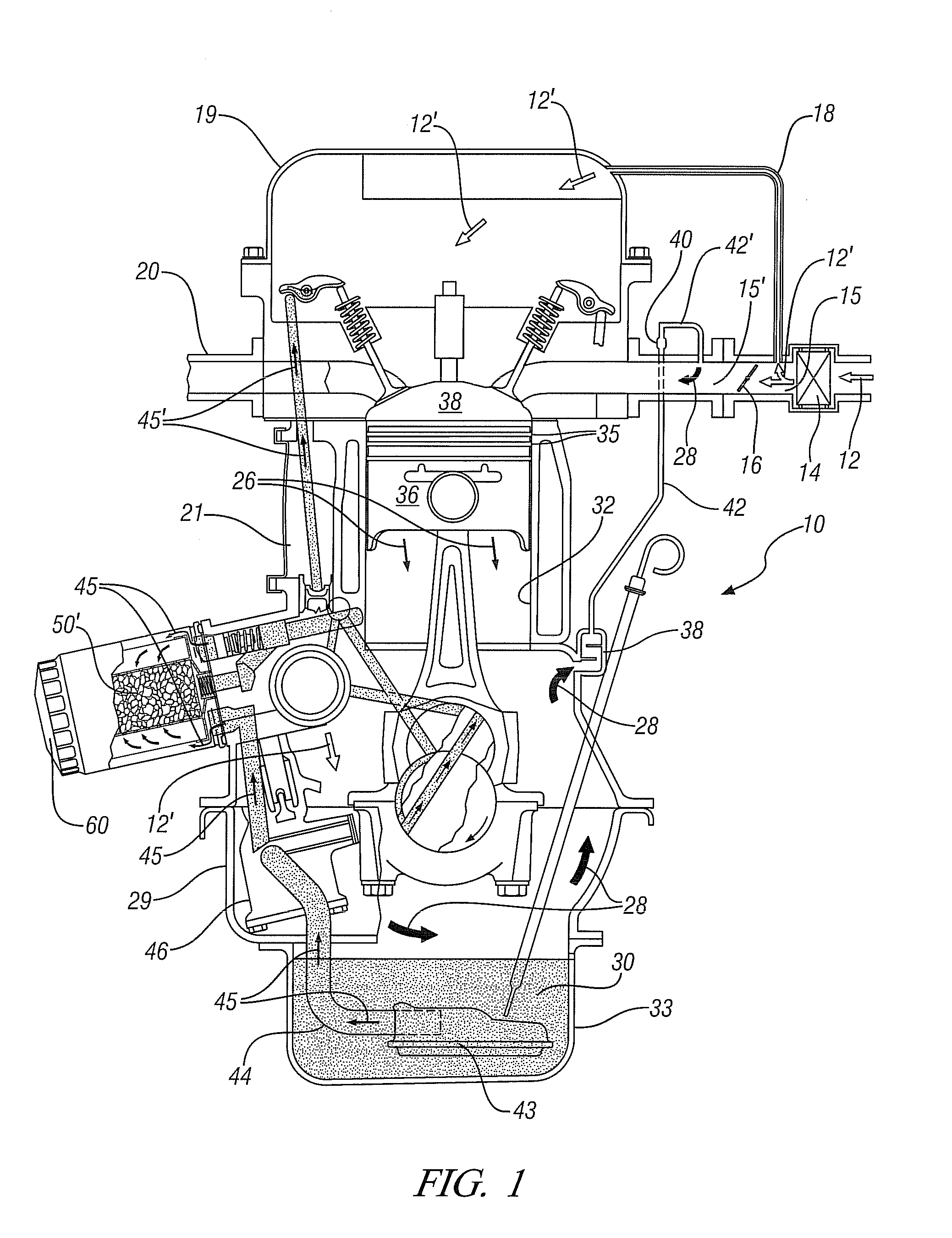Adsorbent structures for removal of water and fuel contaminants in engine oil
a technology of adsorbent structures and engine oil, which is applied in the direction of lubricant mounting/connection, separation processes, silicates, etc., can solve the problems of reducing the life of oil and engine, reducing the adsorption of contaminants, and increasing the vapor pressure of contaminants, so as to achieve easy entry of lubrication oil and extensive interaction
- Summary
- Abstract
- Description
- Claims
- Application Information
AI Technical Summary
Benefits of technology
Problems solved by technology
Method used
Image
Examples
Embodiment Construction
[0029]FIG. 1 shows, in cross-section, a schematic, partial-cutaway view of an automobile engine 10 with a positive crankcase ventilation (PCV) system. In operation of the PCV system, inlet air 12 is filtered by air filter 14 and enters inlet manifold 15. Before inlet air 12 encounters the constricted region of inlet manifold 15 established by throttle plate 16, a portion 12′ of the inlet air 12 is diverted into breather hose 18 and transported via the cylinder head 19 and passages 21 into crankcase 29.
[0030]In the crankcase 29 inlet air 12′ mixes with blow-by gases 26 expelled from the combustion chamber and introduced into crankcase 29 through the gap between cylinder wall 32 and the piston rings 35 of piston 36. The mixture of inlet air 12′ and blow-by gases 26, shown as crankcase gas mixture 28, circulates in crankcase 29 before navigating breather chamber 38 and passing through PCV hose 42 and PCV valve 40.
[0031]After passing through PCV valve 40, the crankcase gas mixture is im...
PUM
| Property | Measurement | Unit |
|---|---|---|
| temperature | aaaaa | aaaaa |
| temperature | aaaaa | aaaaa |
| temperatures | aaaaa | aaaaa |
Abstract
Description
Claims
Application Information
 Login to View More
Login to View More - R&D
- Intellectual Property
- Life Sciences
- Materials
- Tech Scout
- Unparalleled Data Quality
- Higher Quality Content
- 60% Fewer Hallucinations
Browse by: Latest US Patents, China's latest patents, Technical Efficacy Thesaurus, Application Domain, Technology Topic, Popular Technical Reports.
© 2025 PatSnap. All rights reserved.Legal|Privacy policy|Modern Slavery Act Transparency Statement|Sitemap|About US| Contact US: help@patsnap.com



